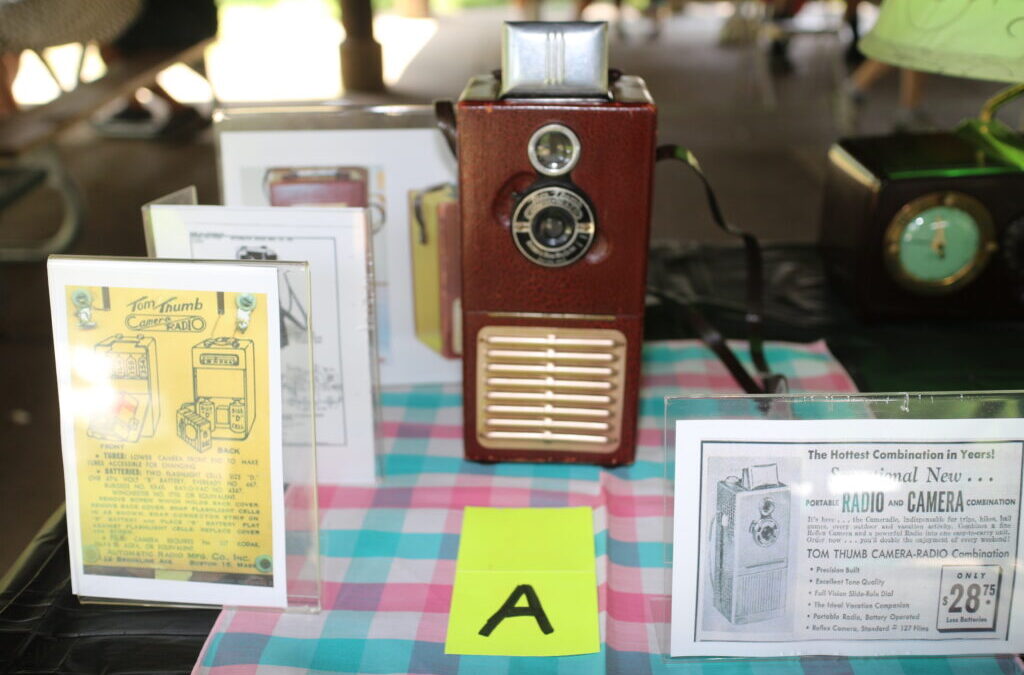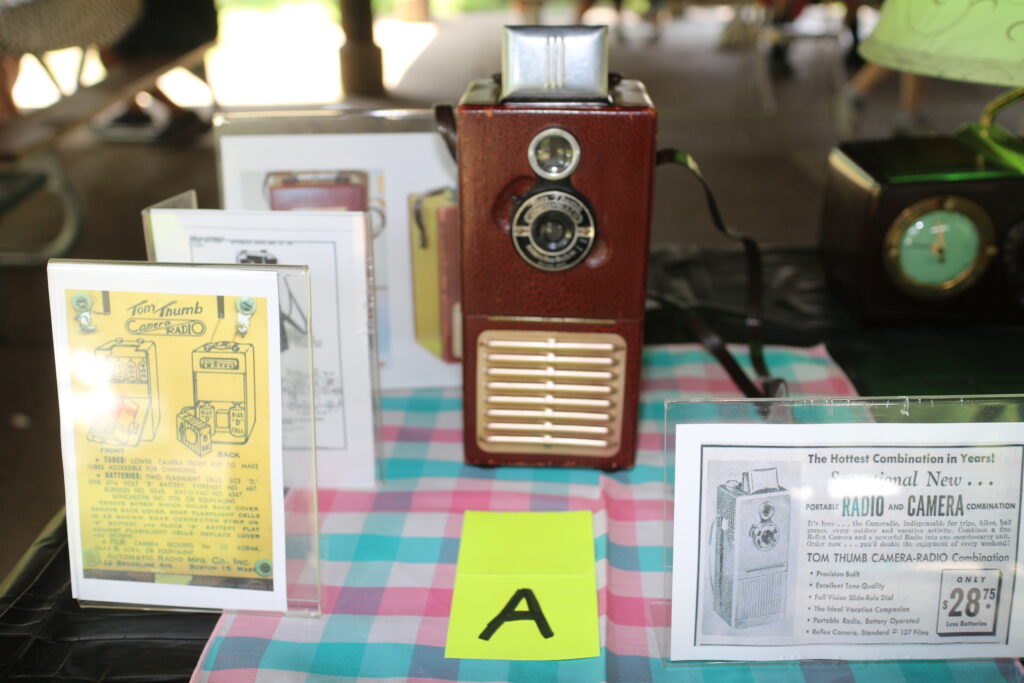PARS Constitution
Constitution of the Pittsburgh Antique Radio Society, Inc.
ARTICLE I – NAME The organization shall be known as the Pittsburgh Antique Radio Society, Inc. (Incorporated).
ARTICLE II – PURPOSE The Society is incorporated as a non-profit corporation. The Society is dedicated to the preservation and exhibition of historic communications equipment and early electronic entertainment media, with an emphasis on the Pittsburgh area and related material. Members are encouraged to acquire, restore, or replicate historic items and collect publications, recordings, and other materials related to the history of communications and broadcasting.
ARTICLE III – MEMBERSHIP Any person having an interest in the purpose of the organization may apply for membership, for which there is no geographic limit. There are three classes of membership: active, associate, and honorary. Active members are those whose dues are paid, and they have all privileges of the Society, including voting privileges. Associate membership may include businesses, organizations, groups, or individuals who wish to be affiliated with our society and its purpose. Honorary members are individuals who possess unique knowledge or experience in radio history.
ARTICLE IV – BOARD OF DIRECTORS AND OFFICERS The Society shall be governed by a Board of Directors consisting or a President, Vice President, Secretary, Treasurer, and five Board members. Board members and officers shall be elected from the membership by a simple majority vote. Failure of any board member or officeholder to attend three consecutive board meetings shall constitute a resignation unless excused by the Board.
ARTICLE V – DUTIES OF OFFICERS
1. PRESIDENT The President shall preside at all meetings of the Society at which he (she) is present. He shall conduct the business and maintain the meeting in proper order. The President is responsible for the organization of the Society’s meetings. He shall keep the organization functioning smoothly, with the assistance of the Board of Directors.
2. VICE PRESIDENT The Vice President shall be program chairman and shall assume the duties and act for the President when the President is absent or unable to perform. If the office of President becomes vacant, the Vice President will assume this office for the remainder of the term of office.
3. SECRETARY The Secretary shall maintain all records of the Society, including minutes of the meetings, which will be kept in a Minute Book. He shall read the minutes of the preceding meeting at the meeting in session, or make them available. He shall handle all correspondence of the Society, and report on same to the Board or membership when appropriate. He also assists in maintaining the Society’s roster of membership, in cooperation with the Treasurer.
4. TREASURER The Treasurer shall maintain the finances of the Society. He shall receive all dues and other funds of the Society. Funds will be deposited in a bank account in the name of the Society. The Treasurer shall pay all expenditures of the organization from the treasury. Normal expenses may be paid on receipt of statements. Unusual or large expenses are subject to prior approval by the Board or membership at a regular or special meeting. The Treasurer shall report income and expenditures to the membership at all membership meetings. He shall assist the Secretary in maintenance of the membership roster.
ARTICLE VI – ELECTION OF OFFICERS AND TERMS OF OFFICE A nominating committee appointed by the Board of Directors shall solicit candidates for office from the active membership. All active and honorary members in good standing are eligible for election to office. The nominating committee shall present candidates’ names to the membership at the first meeting of even numbered years. Additional nominations from the floor will be accepted. All candidates’ names will be posted, and nominations will then be closed. Ballots will be distributed to each active member whose dues are paid, or elections may be made by show of hands. No officer candidate shall act as a teller to count ballots. A simple majority vote of the members present shall elect a candidate to any office. A term of office is for two (2) years, with two (2) consecutive terms, maximum. A person may run again for the same office after vacating for at least one term. Partial terms are not counted. A person serving the remainder of an unexpired term due to vacancy by an incumbent is eligible for election for two full terms.
VI-A. Any officer who wishes to serve longer than their two, 2-year terms, may submit in writing their request to the full board, requesting to run again. The board will then vote, by private ballot, on the request. If passed by majority, that person may have their name put on the ballot to run again.
ARTICLE VII – ELECTION OF BOARD MEMBERS AND TERMS OF OFFICE A nominating committee appointed by the Board of Directors shall solicit candidates for Board membership from the active membership. All active and honorary members are eligible for election to the Board. Members are encouraged to submit their names or the names of other members to the nominating committee. The nominating committee shall present candidates’ names to the membership at the first meeting in odd numbered years. Additional nominations from the floor will be accepted. All candidates’ names will be posted (or announced, with candidates standing for recognition), and nominations will then be closed. Ballots will be distributed, or election will be made by show of hands. No candidate shall act as a teller to count ballots. A simple majority vote of the members present shall elect a candidate to the Board. A term of office is for two (2) years, with two full consecutive terms, maximum. Partial terms are not counted. A person who has served two full terms may run again for election to the Board after vacating for at least one full term, unless appointed by the Board to fill a Board vacancy. A person serving the remainder of an unexpired term due to a Board vacancy is eligible for election for two full terms. Appointments to the Board may be made by the Board only for the purpose of filling vacancies, and these appointments must be ratified by the membership at the next general meeting.
VII-A. The editor of The Pittsburgh Oscillator shall remain a board member as long as he/she is editor, with no term limit.
VII-B. Any board member who wishes to serve longer than their two 2-year terms, may submit in writing their request to the full board, requesting to run again. The Board will then vote, by private ballot, on the request. If passed by majority, that person may have their name put on the ballot to run again.
ARTICLE VIII – MEETINGS General meetings of the membership shall be held quarterly. Meetings are open to all members in good standing. Notices of meetings are sent to the members in the newsletter, The Pittsburgh Oscillator, approximately fifteen days in advance of the meeting date. Meetings are conducted in accordance with Robert’s Rules of Order. Ten members, including two officers, constitute a quorum for the transaction of business. Any motion at a meeting is passed by a simple majority vote. Order of Business shall be: Call to order and opening remarks, reading of minutes, treasurer’s report, reports of committees, introduction of new members, old business, new business, comments from the members, closing remarks, and adjournment.
ARTICLE IX – NEWSLETTER The organization’s publication, named The Pittsburgh Oscillator, will be published quarterly. Each member in good standing will receive a copy of the organization’s membership roster annually. Each member’s name, address, and telephone number will be included on the roster unless the member requests not to be included. The roster will not be given to non-members or commercial vendors, etc.
ARTICLE X – AMENDMENTS Proposed amendments to the Constitution must be presented to the Board for consideration.
ARTICLE XI – FEES A 10% fee will be charged (of the total of the auction) for holding auctions that benefit others, not the Society. The fee will be deposited in the Society’s treasury.

